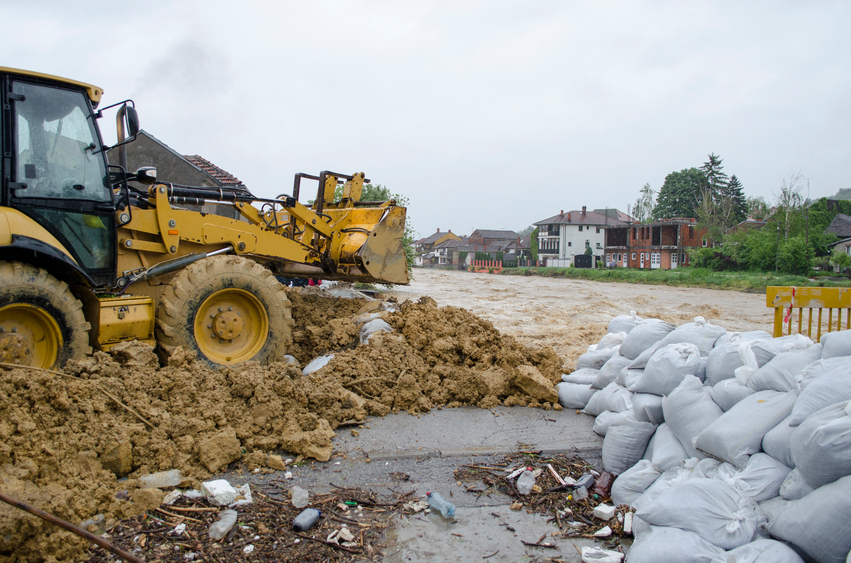Structural Engineering 12 PDH Discount Package 2
Courses in this Package
Coastal Construction - Pre-Design Considerations (S02-023)
Coastal Construction - Determining Site-Specific Loads (S05-013)
Coastal Construction - Designing the Building (S05-014)

This online engineering PDH course provides an overview of the issues that should be considered before the building is designed. Specifically, it provides an understanding of the natural hazards a coastal building may be exposed to and guidance on concepts for designing a more hazard-resistant residential building.
Coastal development has increased in recent years, and some of the sites that are chosen for development have higher risks of impact from natural hazards than in the past. Examples of sites with higher risks are those that are close to the ocean, on high bluffs that are subject to erosion, and on artificial fill deposits. In addition, many of the residential buildings constructed today are larger and more costly than before, leading to the potential for larger economic losses if disaster strikes. However, studies conducted by the Federal Emergency Management Agency (FEMA) and others after major coastal disasters have consistently shown that coastal residential buildings that are properly sited, designed, and constructed have generally performed well during natural hazard events.
This 2 PDH online course is intended for structural engineers, design and construction personnel and other technical professionals who are involved in coastal construction projects.
This PE continuing education course is intended to provide you with the following specific knowledge and skills:
- Understanding the design process and design requirements for different types of natural hazards for buildings located in coastal areas
- Learning about hazard insurance
- Familiarizing with wind insurance
- Familiarizing with the sustainable design considerations for buildings in coastal environments
Upon successful completion of the quiz, print your Certificate of Completion instantly. (Note: if you are paying by check or money order, you will be able to print it after we receive your payment.) For your convenience, we will also email it to you. Please note that you can log in to your account at any time to access and print your Certificate of Completion.

This online engineering PDH course provides the design professional and others with guidance on how to determine, by calculation or graphical interpretation, the magnitude of the loads placed on a building by a particular natural hazard event or a combination of events. The calculation methods presented in this course are intended to serve as the basis of a methodology for applying the calculated loads to the building during the design process.
All coastal residential buildings should be designed and constructed to prevent flotation, collapse, or lateral movement due to the effects of wind and water loads acting simultaneously. Throughout this course, the recommendations of the engineering standards ASCE 7-10, Minimum Design Loads for Buildings and Other Structures (ASCE 2010) will be followed unless otherwise noted. ASCE 7-10 includes procedures for calculating dead and live loads; loads due to soil pressure, fluids, wind, snow, atmospheric ice, and earthquake; and load combinations.
This 5 PDH online course is intended for structural engineers, design and construction personnel, and other technical professionals who are involved in coastal construction projects.
This PE continuing education course is intended to provide you with the following specific knowledge and skills:
- The following site-specific loads for coastal buildings:
- Dead Loads
- Live Loads
- Snow Loads
- Flood Loads
- Tsunami Loads
- Wind Loads
- Tornado Loads
- Seismic Loads
- Determining the combination loads for coastal buildings
Upon successful completion of the quiz, print your Certificate of Completion instantly. (Note: if you are paying by check or money order, you will be able to print it after we receive your payment.) For your convenience, we will also email it to you. Please note that you can log in to your account at any time to access and print your Certificate of Completion.

This online engineering PDH course provides the design professional with sufficient background and examples for effectively designing a residential building proposed to be constructed in a coastal hazard area. The designer will find that engineering judgment will need to be applied to a range of issues which will arise during the design of a coastal residential building. This course describes the design process which involves the following:
- Determining design loads
- Determining the building’s foundation, structural frame, and envelope
- Determining the connections between individual elements
- Determining the elevation, placement, and support for utilities
- Selecting the appropriate materials
In this course, the recommended design method is Allowable Stress Design (ASD), so there are factors of safety (FS) built into the development of the material stresses and the forces at the connections. This design method has been chosen for this manual because ASD continues to be the predominant design method in light-frame, residential, wood construction.
This 5 PDH online course is intended for structural engineers, design and construction personnel and other technical professionals who are involved in coastal construction projects.
This PE continuing education course is intended to provide you with the following specific knowledge and skills:
- Understanding the design process
- Determining site-specific loads
- Applying loads to the building
- Determining forces at connections and stresses in materials
- Developing connections at each link
- Selecting building materials
- Designing for the building envelope
- Designing for electrical and mechanical equipment
- Designing for appurtenant structures
Upon successful completion of the quiz, print your Certificate of Completion instantly. (Note: if you are paying by check or money order, you will be able to print it after we receive your payment.) For your convenience, we will also email it to you. Please note that you can log in to your account at any time to access and print your Certificate of Completion.